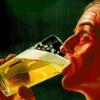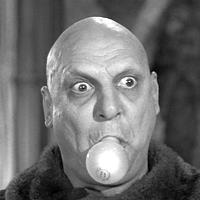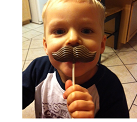Every once in awhile, I look at my various tools and decide I no longer trust them. ![]() My pH meter is toast (apparently) and so I also decided to check the accuracy of my Thermapen since it's actually older than my pH meter. I got this off the Thermapen site. Apparently it only applies to their product although I'm pretty sure the instructions for making the ice bath would apply to any thermometer. They say...An ice bath test is the easiest way to test the accuracy of any thermometer, but only if the ice bath is created properly. Many internet videos notwithstanding, an icebath is NOT just a glass of ice water. Follow this four-step process carefully to create a proper ice bath:Step 1: Fill a large glass to the very top with ice (crushed ice is preferred but not required).Step 2: Slowly add very cold water until the water reaches about one half inch (1 centimeter) below the top of the ice. Note: If the ice floats up off the very bottom of the glass at all, the ice bath will likely be warmer than 32°F (0°C). Pour off any excess water.Step 3: Gently stir the ice mixture and let it sit for a minute or two.Step 4: Insert the probe of the thermometer being tested about 2 inches (5 centimeters) into the ice mixture and gently stir while you take your reading.Note: Be sure to keep stirring gently. If the tip of your thermometer probe comes to rest against a chunk of ice, it will show a temperature below the ice point and if it comes to rest against the sides or bottom of the glass, it may read higher. Your Thermapen will drop to 33°F (1°C) within 3 seconds and will continue to approach 32.0°F (0.0°C) over the next 2 or 3 seconds. The final resting temperature should be between 31.3°F and 32.7°F (-0.4°C and 0.4°C) (worst case). If your Thermapen is accurate in a proper ice bath, it will almost certainly be accurate at all other temperatures.I tried this on mine and it rested at 31.9° which suggests it's all good. That temp range of 1.6° is a little off-putting as we typically shoot for relatively precise mash temps. Mine measured .6 higher than the low and .8 lower than the high so it seems to be close to the middle of the range. Cheers Beerheads.
My pH meter is toast (apparently) and so I also decided to check the accuracy of my Thermapen since it's actually older than my pH meter. I got this off the Thermapen site. Apparently it only applies to their product although I'm pretty sure the instructions for making the ice bath would apply to any thermometer. They say...An ice bath test is the easiest way to test the accuracy of any thermometer, but only if the ice bath is created properly. Many internet videos notwithstanding, an icebath is NOT just a glass of ice water. Follow this four-step process carefully to create a proper ice bath:Step 1: Fill a large glass to the very top with ice (crushed ice is preferred but not required).Step 2: Slowly add very cold water until the water reaches about one half inch (1 centimeter) below the top of the ice. Note: If the ice floats up off the very bottom of the glass at all, the ice bath will likely be warmer than 32°F (0°C). Pour off any excess water.Step 3: Gently stir the ice mixture and let it sit for a minute or two.Step 4: Insert the probe of the thermometer being tested about 2 inches (5 centimeters) into the ice mixture and gently stir while you take your reading.Note: Be sure to keep stirring gently. If the tip of your thermometer probe comes to rest against a chunk of ice, it will show a temperature below the ice point and if it comes to rest against the sides or bottom of the glass, it may read higher. Your Thermapen will drop to 33°F (1°C) within 3 seconds and will continue to approach 32.0°F (0.0°C) over the next 2 or 3 seconds. The final resting temperature should be between 31.3°F and 32.7°F (-0.4°C and 0.4°C) (worst case). If your Thermapen is accurate in a proper ice bath, it will almost certainly be accurate at all other temperatures.I tried this on mine and it rested at 31.9° which suggests it's all good. That temp range of 1.6° is a little off-putting as we typically shoot for relatively precise mash temps. Mine measured .6 higher than the low and .8 lower than the high so it seems to be close to the middle of the range. Cheers Beerheads.
Edited by Village Taphouse, 11 February 2015 - 08:03 PM.
















